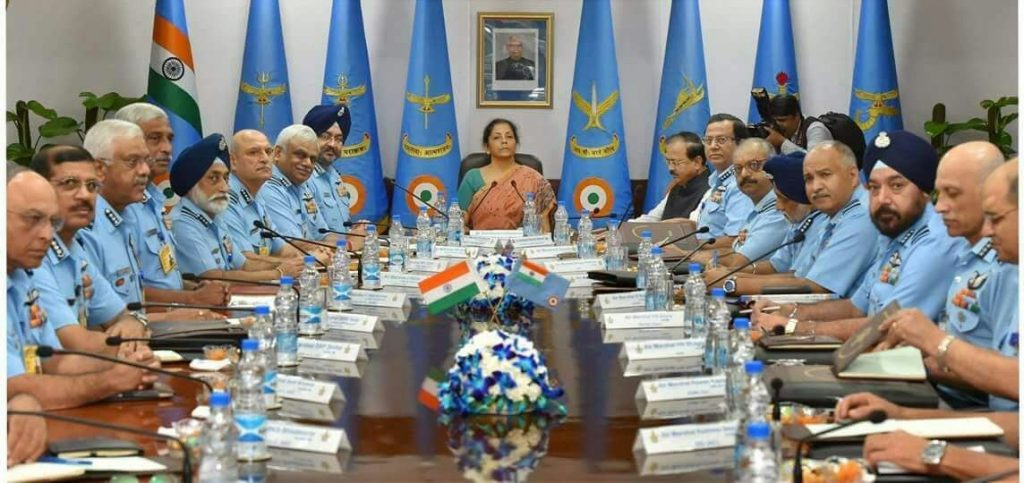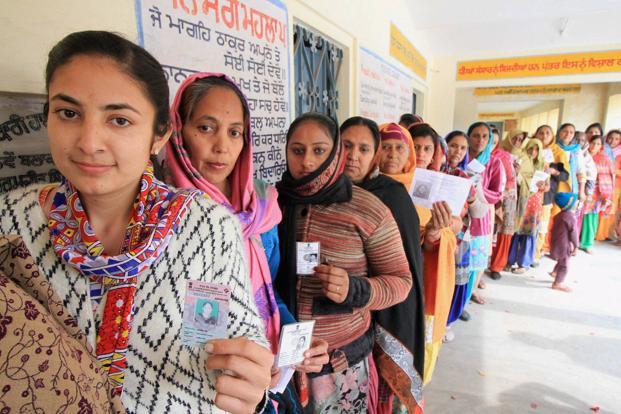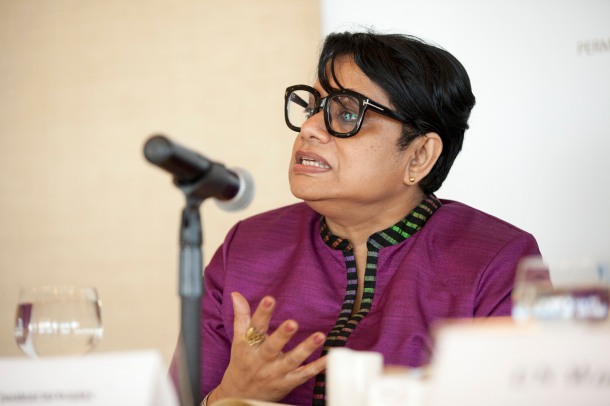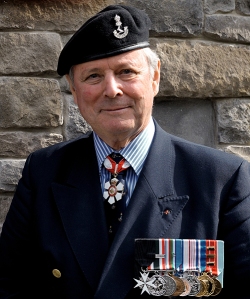by Anna Plunkett
27 May 2019

Myanmar is a country that has sprung to global attention in the last few years, its seemingly self-led non-violent transition towards democracy was soon tarnished by the systematic ethnic cleansing of the country’s Rohingya Muslims in Rakhine State. At the epicentre of these storms has been Daw Aung San Suu Kyi, nicknamed ‘the Lady’. The now State Counsellor had been the global symbol of modern non-violent, pro-democracy struggles from behind the bars of her house arrest. After her release in 2012 she won a landslide election to join the legislature as an MP for the National League of Democracy, a taste of the victory she would achieve three years later in the 2015 election. She soon achieved notice within Myanmar for her preference for traditional dress inspiring a resurgence in this simple but elegant style. However, since taking office she has failed to maintain this saint-like status, losing support both domestically and abroad. Her fall from moral status symbol to a pariah of the diplomatic circles she was once the darling of provides a stark snapshot into the complexities facing women throughout Myanmar. Women in Myanmar are often portrayed as exotic and beautiful, with striking images of long-necked tribes and thanaka painted faces used throughout the tourist industry. Yet their access to many leadership positions and even basic rights are fraught with much darker struggles.
Daw Suu was the symbol and leader of the pro-democracy struggle in Myanmar[1] since her arrival in the country in 1987. She gave inspiring speeches from outside the central hospital where she cared for her sick mother, the original reason for her return to the country after settling down with husband Michael Aris in Oxford. Since then, her face has been plastered on street signs, posters, postcards and matchboxes across Myanmar and internationally, despite domestic bans.[2] In the wake of her rise within the political arena, and in response to the continuing conflicts within Myanmar’s borderlands, a plethora of women’s organisations jumped into existence.[3] Today, almost all ethnic armed organisations (EAOs) have dedicated women’s organisations or arms focused on the promotion of women’s rights, human rights and economic and social welfare. These groups, which have been fighting along almost all of Myanmar’s borderlands for autonomy from the state have been active since before Myanmar achieved independence. The presence of such wars have isolated the communities in these regions from access to state services and international norms, something these women’s groups and branches focus on attempting to provide to the communities under EAO rule. The mobilisation of women is not unique to the borderlands, with women’s rights groups forming within the capital and across the central zones. The power of these new women’s groups was seen during the women led factory strikes in 2015 and 2011 over worker protections within Chinese owned garment factories. Women have the capacity and are willing to mobilise around key issues that impact their lifestyles and livelihoods.

However, this organisation and activism is not fully mirrored in the positive progress of women’s rights within this transitioning state. Over the past four years a network of women’s organisations have organised “16 days of activism” to promote basic protections for women within Myanmar and advocate against domestic and other forms of violent abuse against women. An event that struggled to get official state approval in its first year, but has since gained standing with the Pa’O Ethnic Affairs Minister speaking at the event in 2018. The necessity of this activism became clear to one trainer when working within the local communities, by the end of a three-day training programme on domestic abuse almost all participants had identified and spoken about examples of physical or psychological abuse they had personally experienced.[4] Women’s rights continue to sit within a state of almost abject neglect, with the few ongoing state interventions failing to make the changes that are increasingly being demanded from below.
Another noted how domestic abuse was viewed as a “natural” part of relationships between men and women within many rural communities, this normalisation was attributed to the legacy of violence from the conflict within the borderlands and lack of education within many communities.[5]
The continuing war across Myanmar’s borderlands is compounding the struggle for women’s rights and equal opportunity. Multiple reports have identified rape as a weapon of war utilised by both the military and the EAOs.[6] More women are beginning to come forward, to seek justice and support, however services are stretched trying to provide adequate assistance within a justice system biased against victims. The justice system remains tied to the military dominated government, with cases often taking too much time and becoming so expensive that communities seek redress through alternative, often informal means. Many villages continue to rely upon village headmen or financial redress packages to provide justice over those of offered by the official justice mechanisms.
Despite this, the women of Myanmar are far from just victims within this uneven landscape. Women’s organisations continue to report and advocate on crimes and inequalities, even in the face of growing oppression from the state. In many of the conflict zones women act as the primary household earners, with men away at war or seriously injured by it. Where direct conflict has ended the persistent drugs epidemic in the borderlands, many women face being the sole providers for partners and sons with addictions. Women also play a critical and active role within Myanmar’s ethnic armed organisations, including roles as fighters within women’s units. Women continue to be active within their communities and fight to be heard and included.
Women’s activism within Myanmar’s conflict zones – both within the conflict effort and as primary earners – has materialised due to a belief that women pose less of a threat and are therefore less likely to be arrested. This belief has resulted in women taking on responsibilities traditionally reserved for men, such as village headmen. During the conflict in Karen State, the number of female village heads has surged, as the role became less desirable due to concerns over the violence such leaders face when interacting with the state:
“Village heads … are usually women, because men cannot survive the repeated beatings and punishments by the soldiers [whereas women are beaten and tortured somewhat less often]. Therefore, nobody wants to be a village head throughout the whole region.” Female Village Head
Yet once this danger has passed, women have found themselves removed from these roles in power and leadership. They are blocked from these key leadership positions which increase in desirability as the immediate threat has reduced with the signing of the National Ceasefire Agreement in 2015.
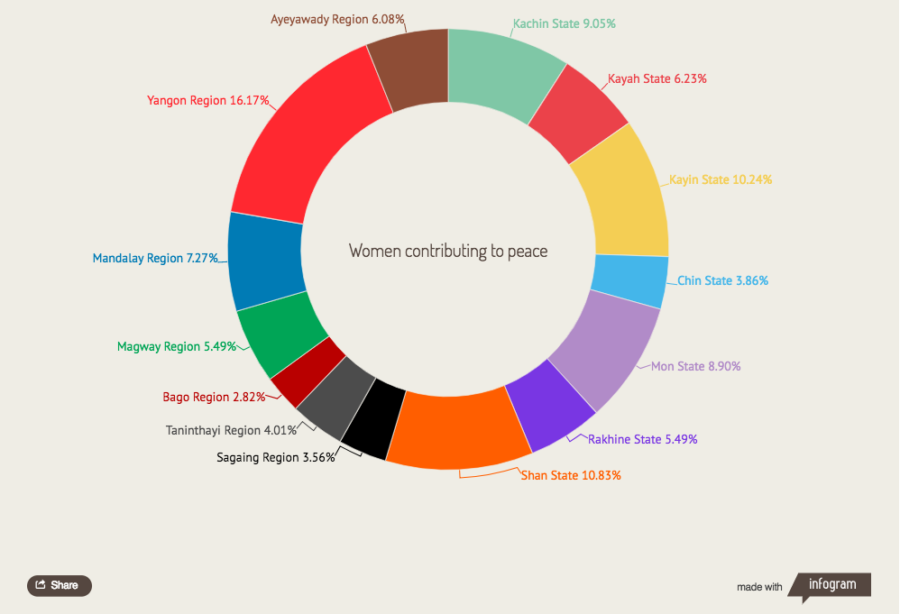
Women have fulfilled a breadth of roles within Myanmar’s war efforts, from fighters to negotiators and mediators to service providers and village heads. Yet as wars within the borderlands begin to reduce so have the roles open to women. Despite the opening of the national dialogues for peace, and the government more broadly under the National League for Democracy, women are failing to achieve representation. A recent report released by USAID highlighted the underrepresentation of women within the peace process, with many fulfilling technical roles within the peace process but unable to engage with policies under negotiation. Meanwhile women continue to be victims within Myanmar’s war zones and at home. Despite their organisation and promotion of their plights, reforms to make domestic abuse illegal have stalled in parliament.
Women may be visible within the political arena in Myanmar, and their roles may be varied, but they still lack access to basic rights and this is proving a chokehold not only for them, but for Myanmar’s development overall. Progress is beginning to develop but it is slow and proving to be increasingly ineffective in the wake of increasing demands for women’s rights, participation and activism. Though the state may be slow to respond there is no doubt about the veracity of womens activism in Myanmar, which if the state could harness could prove to be force of will needed to establish change.
Anna is a doctoral researcher in the Department of War Studies, King’s College London. She received her BA in Politics and Economics from the University of York, before receiving a scholarship to continue her studies at York with an MA in Post-War Recovery. She was the recipient of the Guido Galli Award for her MA dissertation. Her primary interests include conflict and democracy at the sub-national level, understanding how minor conflicts impact democratic realisation within quasi-post conflict states. Her main area of focus is Burma’s ethnic borderlands and ongoing conflicts within the region. She has previously worked as a human rights researcher focusing on military impunity in Burma and has conducted work on evaluating Bosnia’s post-war recovery twenty years after the Dayton Peace Accords. You can follow her on Twitter @AnnaBPlunkett.
[1] Then Burma, the military SPDC government changed the name in 1989 though Burma was still widely used until the transfer to a civilian government in 2011
[2] This has been reported by ex-political prisoners who were arrested simply for having images of “The Lady” after the 8888 uprising.
[3] For example, see Women’s League of Burma, GEN and WON – all womens networks with large member organisations based on womens rights.
[4] Insight from field interview with women’s rights trainers, conducted by Author in 2018
[5] Testimonies given as part of research on Myanmar’s democratisation process as part of the author’s PhD research. Testimonies were collected by the author on multiple research trips between 2018-2019.
[6] See reports by Karen Human Rights Group and Kachin Women’s Association Thailand respectively: https://reliefweb.int/report/myanmar/suffering-silence-sexual-violence-against-women-southeast-myanmar-december-2018 https://kachinwomen.com/reports/
